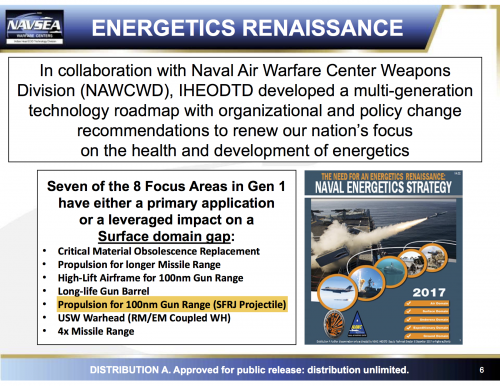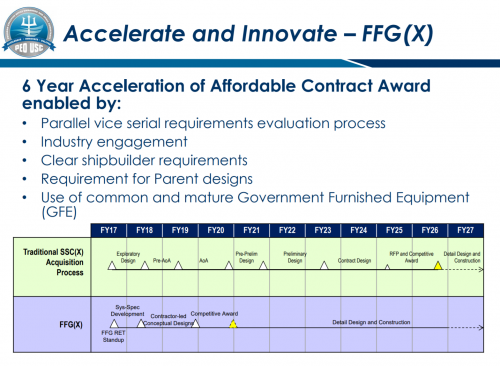“We’re going to start putting the pedal to the metal on the next major surface combatant,” Richardson said Wednesday afternoon. “I think we learned a lot in the frigate discussion and turned around the major surface combatant discussion in record time.
“I’d like to do the whole thing, well, as fast as possible but do it in the frigate timeframes: in terms of defining what we want, the requirements, getting industry involved, making it a very open competition."
The Navy will be zeroing in on what they want out of their new ship very quickly, Richardson said, which means shipbuilders and industry could be getting bids together on the Navy’s new major surface combatant in a matter of months instead of years.
“I’d like to get this pretty well defined in the 2018, 2019 timeframe,” he said.
Richardson pointed to three main focus areas for a new major surface combatant: An existing hull form to speed up acquisition; excess power capacity; and the ability to rapidly switch out systems.
“Some parts of that ship are going to be very similar to ships that are around right now (hull forms) and that’s going to last the life of the ship,” Richardson said. “So, let’s get a hull form — and there are probably ones out there that are just fine."
The second area Richardson pointed to is the electrical plant, a must if the Navy is going to integrate lasers and electromagnetic weapons in the future.
“Power plant and power generation — you need to really pay attention to that because its very hard to change after you buy it," he said. "And if you think about the kinds of combat systems and weapons systems we’re going to have on future ships, they have got to be able to generate pulsed power and those sorts of things.
“So, lots of power. Buy as much power as you can afford because it’s like RAM on your computer, you’re going to need more as soon as you buy it.”
The third area, Richardson said, is that new technology must be easily switched during short stints in the yards, not requiring major ship alterations to accommodate new systems.
“Everything else, though, is swappable,” Richardson continued. “And that has to be designed in to the DNA of the ship so you can come in on a short upkeep and swap out your radar system, or your combat system, or put this weapons system in.
“It has a lot to do with designing standards so that everybody can build to those standards so it’s a much more dynamic, swappable type of a thing.”



